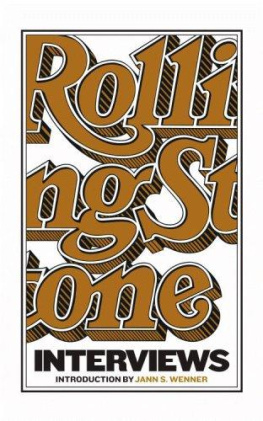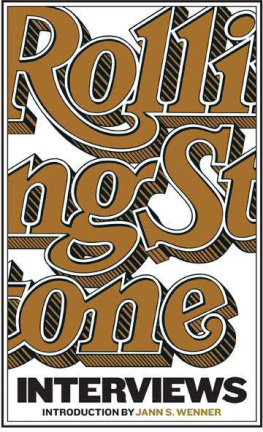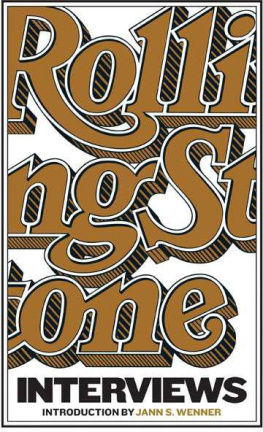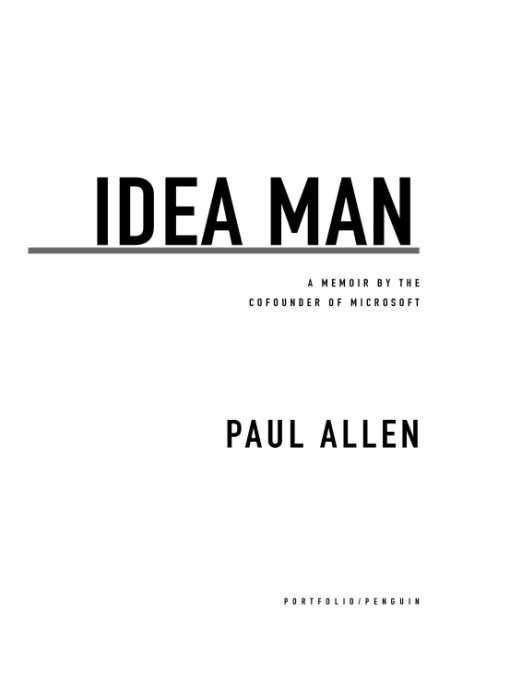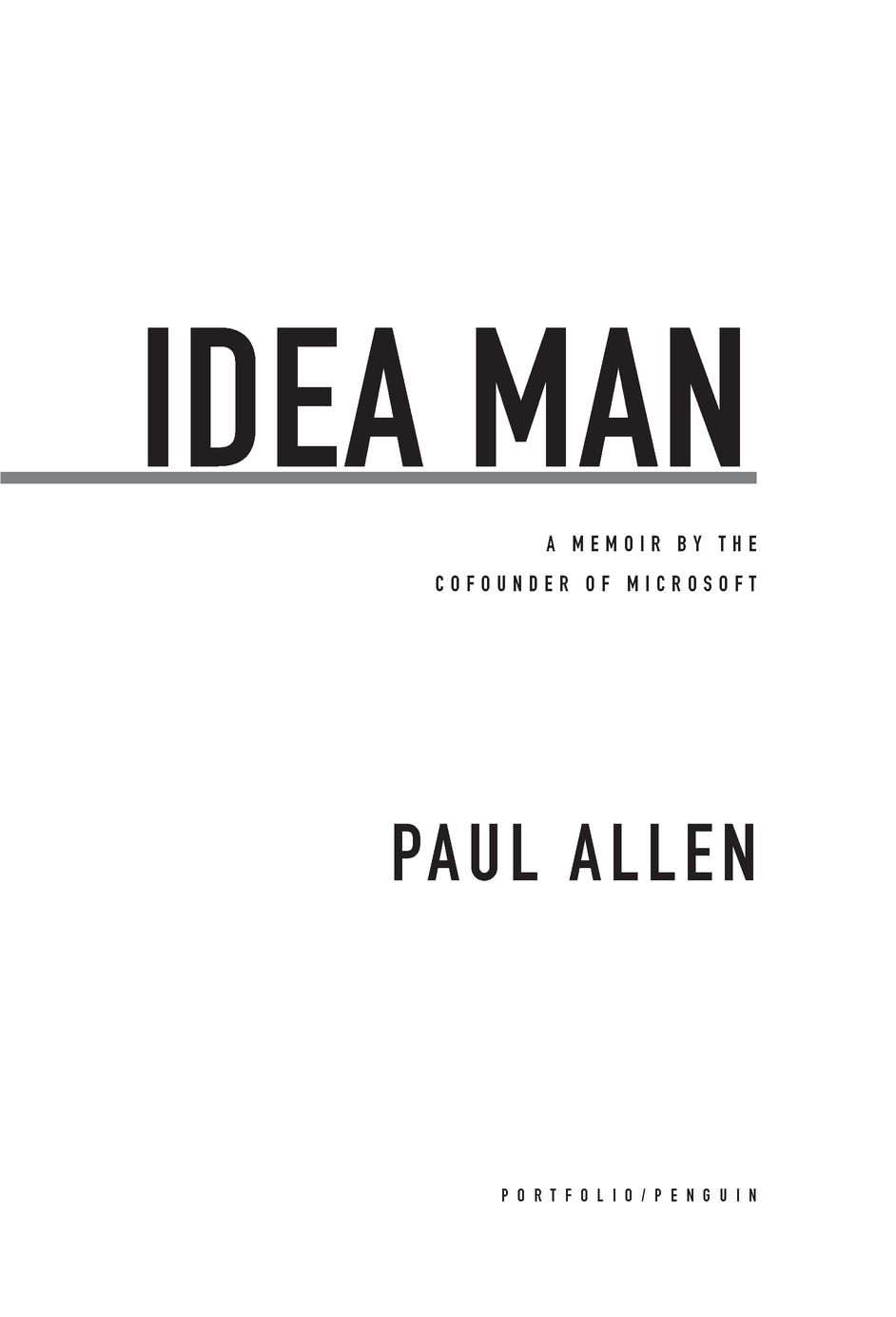Paul Allen - Idea Man: A Memoir by the Cofounder of Microsoft
Here you can read online Paul Allen - Idea Man: A Memoir by the Cofounder of Microsoft full text of the book (entire story) in english for free. Download pdf and epub, get meaning, cover and reviews about this ebook. year: 2011, publisher: Penguin Group USA, genre: Home and family. Description of the work, (preface) as well as reviews are available. Best literature library LitArk.com created for fans of good reading and offers a wide selection of genres:
Romance novel
Science fiction
Adventure
Detective
Science
History
Home and family
Prose
Art
Politics
Computer
Non-fiction
Religion
Business
Children
Humor
Choose a favorite category and find really read worthwhile books. Enjoy immersion in the world of imagination, feel the emotions of the characters or learn something new for yourself, make an fascinating discovery.

- Book:Idea Man: A Memoir by the Cofounder of Microsoft
- Author:
- Publisher:Penguin Group USA
- Genre:
- Year:2011
- Rating:3 / 5
- Favourites:Add to favourites
- Your mark:
Idea Man: A Memoir by the Cofounder of Microsoft: summary, description and annotation
We offer to read an annotation, description, summary or preface (depends on what the author of the book "Idea Man: A Memoir by the Cofounder of Microsoft" wrote himself). If you haven't found the necessary information about the book — write in the comments, we will try to find it.
The virtual world he imagined is now as real as concrete...the very fabric of a twenty-first century that he and a tiny club of others literally invented. Shy, humble, brilliant...Paul Allens intellect and generosity of spirit are there on every page.
-Bono
Here is the tale of one of the most restlessly curious and broadly imaginative people of our times, which in simple and eloquent language tells how he changed those times forever.
-Jann S. Wenner, edtior and publisher, Rolling Stone
Pauls natural curiosity will always guide him into uncharted waters. Whether its a newfangled device called the personal computer; exploring the bottom of the sea or deep space; music, movies, and museums; or perhaps his most significant adventure so far-the human brain-two things are certain: It wont be the same afterward, and it will be an extraordinary journey.
-Peter Gabriel
Whenever you are given the opportunity to get behind the scenes with one of the greatest creative minds in the world of technology and innovation, you have to jump on it. Paul Allen has shown a unique ability and desire to contribute to and powerfully influence a broad spectrum of interests, including technology, science, medicine, the arts, and philanthropic endeavors.
-Pete Carroll, head coach of the Seattle Seahawks and author of Win Forever
A rare glimpse into the mind of a great innovator; a chance to see Paul as only his friends have. The fascinating tale of an ordinary American boys rise to being one of the richest men in history.
-Carrie Fisher
Paul is a true adventurer in every sense of the word and, as a friend, he is both loyal and generous of spirit. His ideas have helped shaped the world we live in, and witnessing the way his mind works is like watching a Jimi Hendrix guitar solo: you have no idea how he does it, but it blows your mind.
-Dave Stewart
This son of Oklahoma, by way of Seattle, electrocuted a classmate, soldered his skin, gassed the family pet, purposely crashed systems, dove in dumpsters for coffee-stained printouts, and went on to create the engine that changed the world.
-Dan Aykroyd
The entire conversation took five minutes. When it was over, Bill and I looked at each other. It was one thing to talk about writing a language for a microprocessor and another to get the job done . . . If wed been older or known better, Bill and I might have been put off by the task in front of us. But we were young and green enough to believe that we just might pull it off.
Paul Allen, best known as the cofounder of Microsoft, has left his mark on numerous fields, from aviation and science to rock n roll, professional sports, and philanthropy. His passions and curiosity have transformed the way we live. In 2007 and again in 2008, Time named him one of the hundred most influential people in the world.
It all started on a snowy day in December 1974, when he was twenty-one years old. After buying the new issue of Popular Electronics in Harvard Square, Allen ran to show it to his best friend from Seattle, Bill Gates, then a Harvard undergrad. The magazines cover story featured the Altair 8800, the first true personal computer; Allen knew that he and Gates had the skills to code a programming language for it. When Gates agreed to collaborate on BASIC for the Altair, one of the most influential partnerships of the digital era was up and running.
While much has been written about Microsofts early years, Allen has never before told the story from his point of view. Nor has he previously talked about the details of his complex relationship with Gates or his behind-closed- doors perspective on how a struggling startup became the most powerful technology company in the world. Idea Man is the candid and long-awaited memoir of an intensely private person, a tale of triumphant highs and terrifying lows.
After becoming seriously ill with Hodgkins lymphoma in 1982, Allen began scaling back his involvement with Microsoft. He recovered and started using his fortune-and his ideas-for a life of adventure and discovery, from the first privately funded spacecraft (SpaceShipOne) to a landmark breakthrough in neuroscience (the Allen Brain Atlas). His eclectic ventures all start with the same simple question: What should exist? As Allen has written:
To me, thats the most exciting question imaginable. . . . From technology to science to music to art, Im inspired by those whove blurred the boundaries, whove looked at the possibilities, and said, What if...? In my own work, Ive tried to anticipate whats coming over the horizon, to hasten its arrival, and to apply it to peoples lives in a meaningful way. . . . The varied possibilities of the universe have dazzled me since I was a child, and they continue to drive my work, my investments, and my philanthropy.
Idea Man is an astonishing true story of ideas made real.
Paul Allen: author's other books
Who wrote Idea Man: A Memoir by the Cofounder of Microsoft? Find out the surname, the name of the author of the book and a list of all author's works by series.





